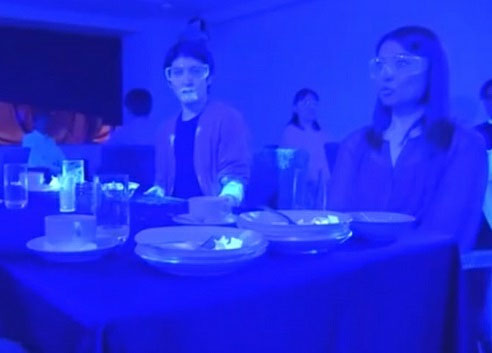Tokyo
In order to reveal the rapid transmission of viruses in public spaces like restaurants, Japan conducted a black light experiment that simulated the atmosphere at a buffet restaurant or on a cruise ship.
A viral video from Japan showed how easily germs and viruses can spread in restaurants from one infected person.
The video shot by Japan’s public broadcasting organisation NHK, in collaboration with infectious disease experts, shows 10 people coming into the restaurant. Among them, one person is identified as the ‘infected’ individual. The people carry on with their buffet as they are expected to, oblivious to potential contamination.
At the end of the video, the participants are cast under black lights which shows where the germs and viruses have spread through one infected person. Moreover, the substance, used to signify the germs, can be seen on food, serving utensils and platters, and even on the faces of people.
According to health experts and infectious disease specialists, the black light experiment demonstrated how quickly a virus can spread, especially when hand washing is not performed. However, it would be even more effective to see the experiment done after the “infected” person washes their hands for five and then ten seconds.
Kentaro Iwata, an infectious disease specialist at Kobe University said: “The experiment just described the possibility of the spread by contact, and that is not proof of what happened, so the distinction has to be clearly made between what could happen and what did happen.”—AP










